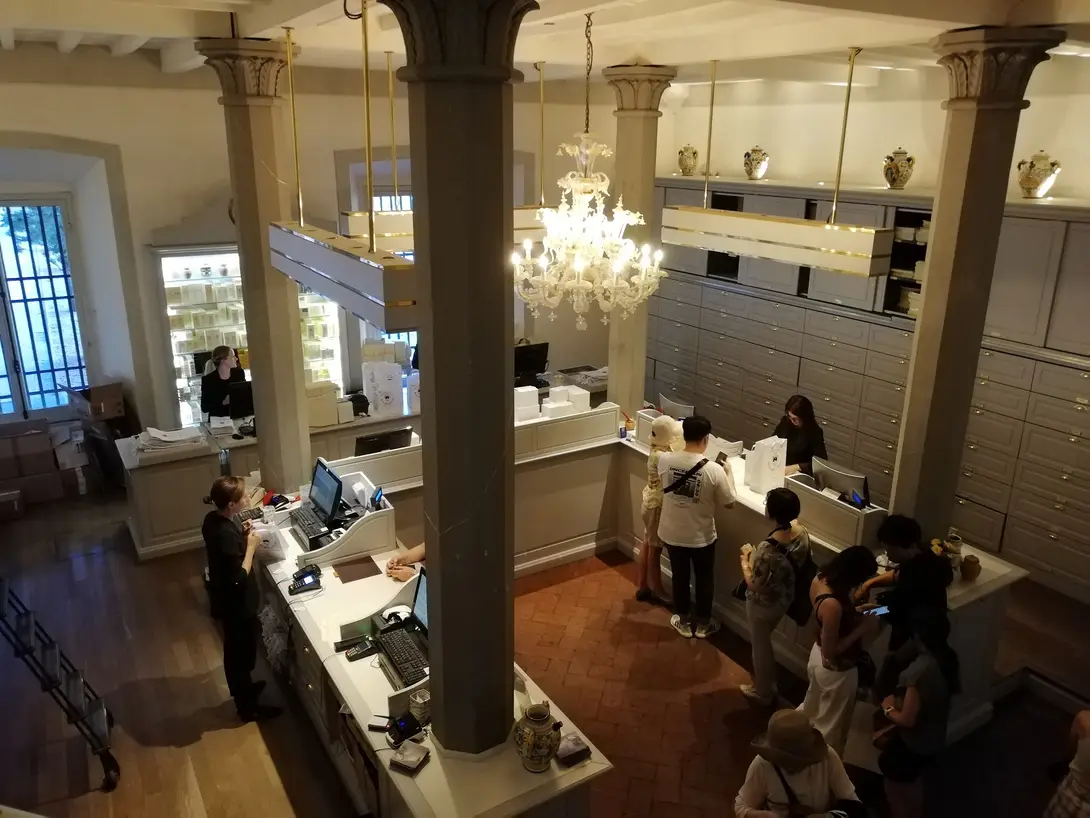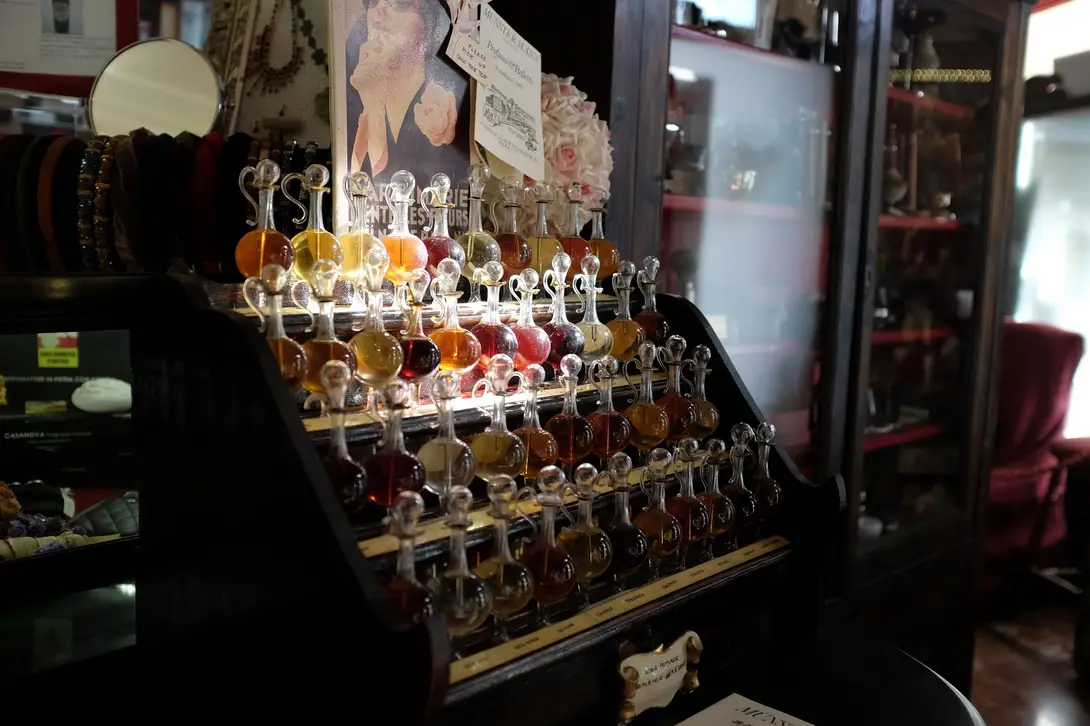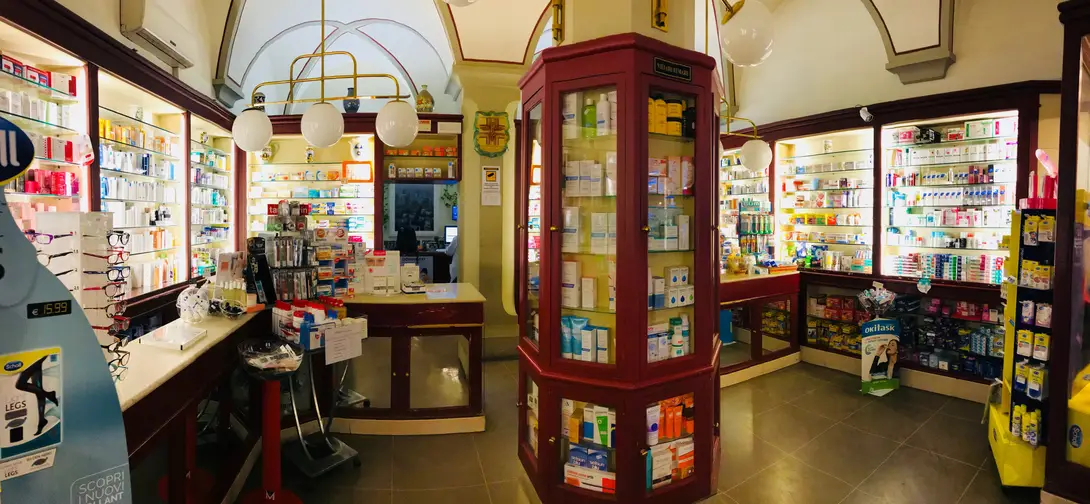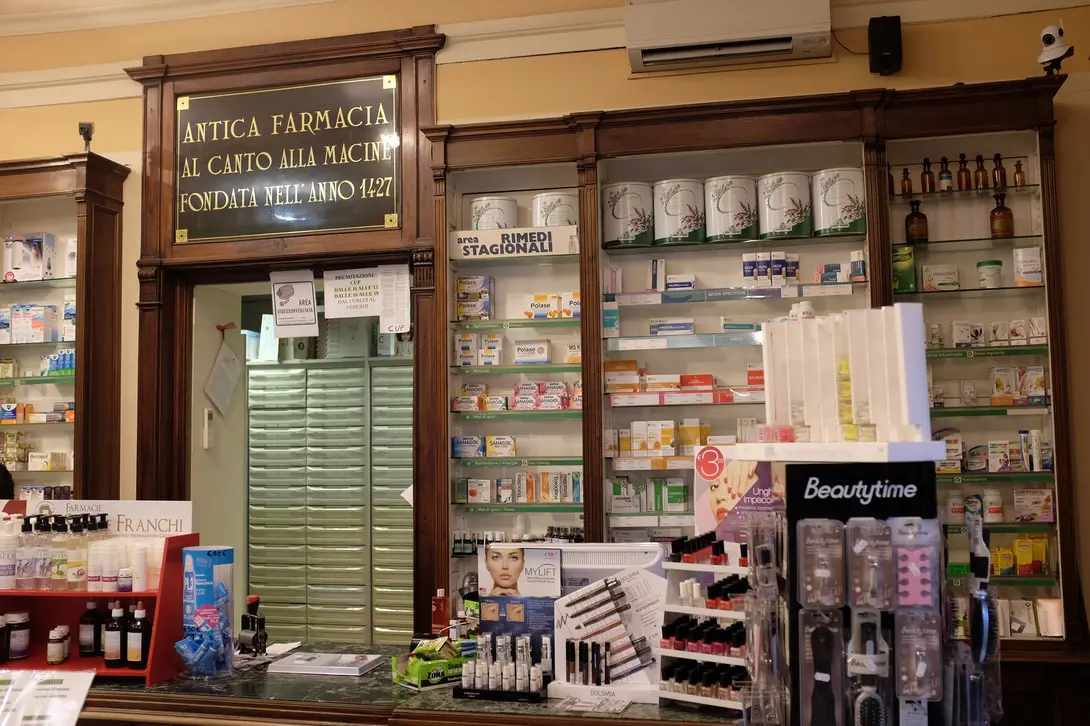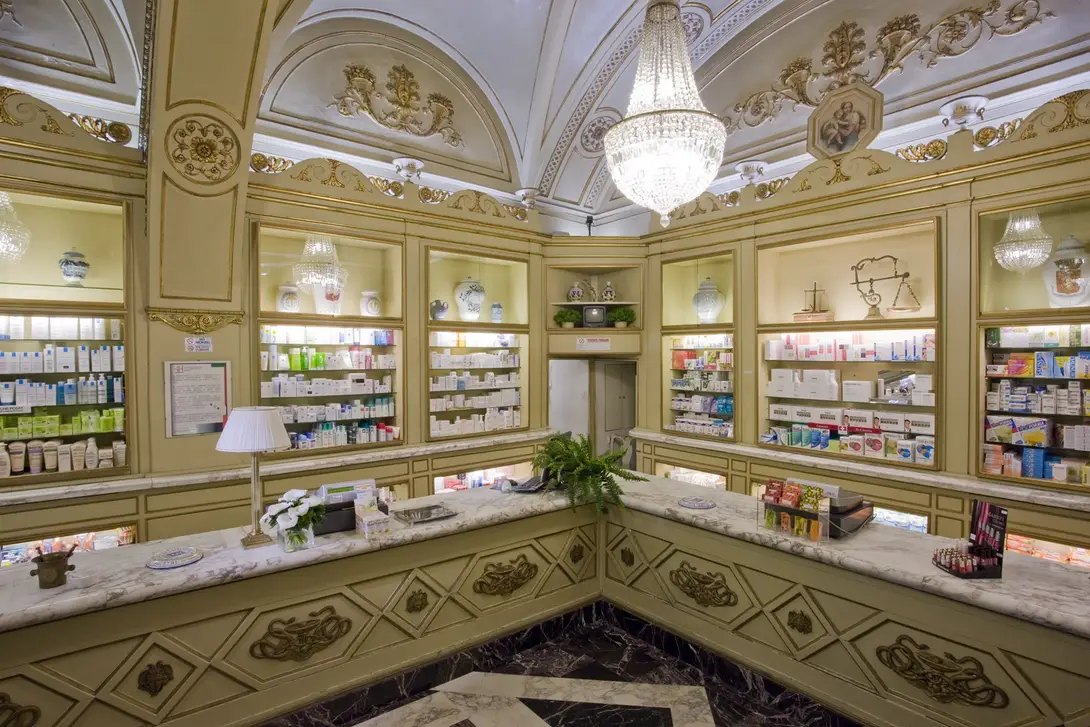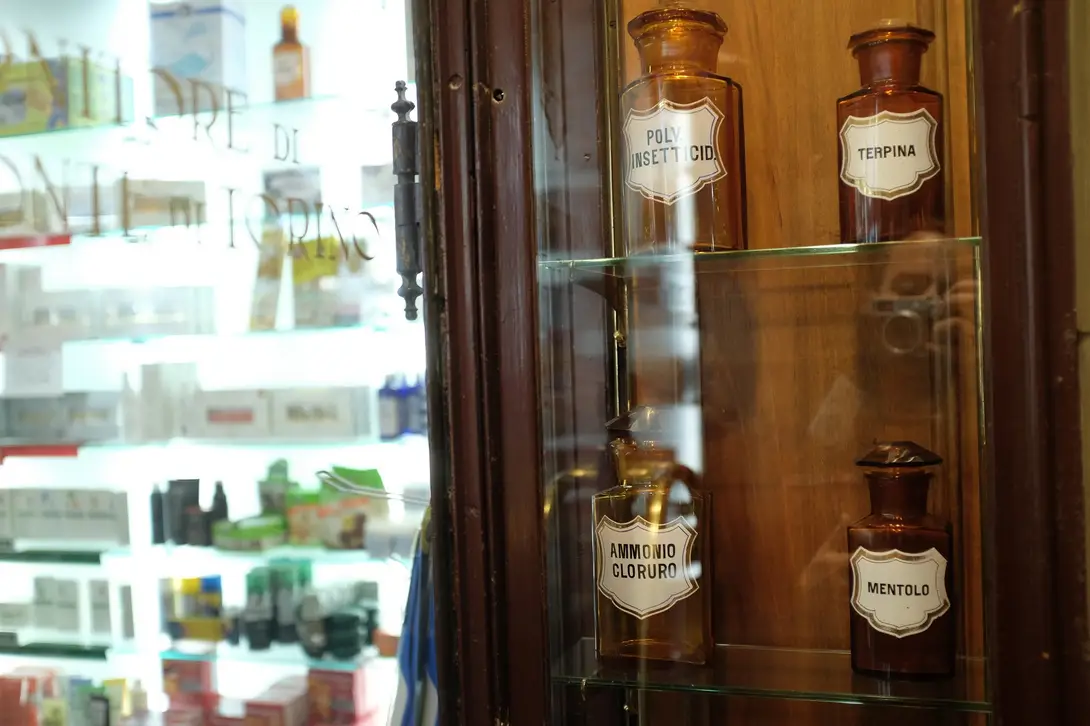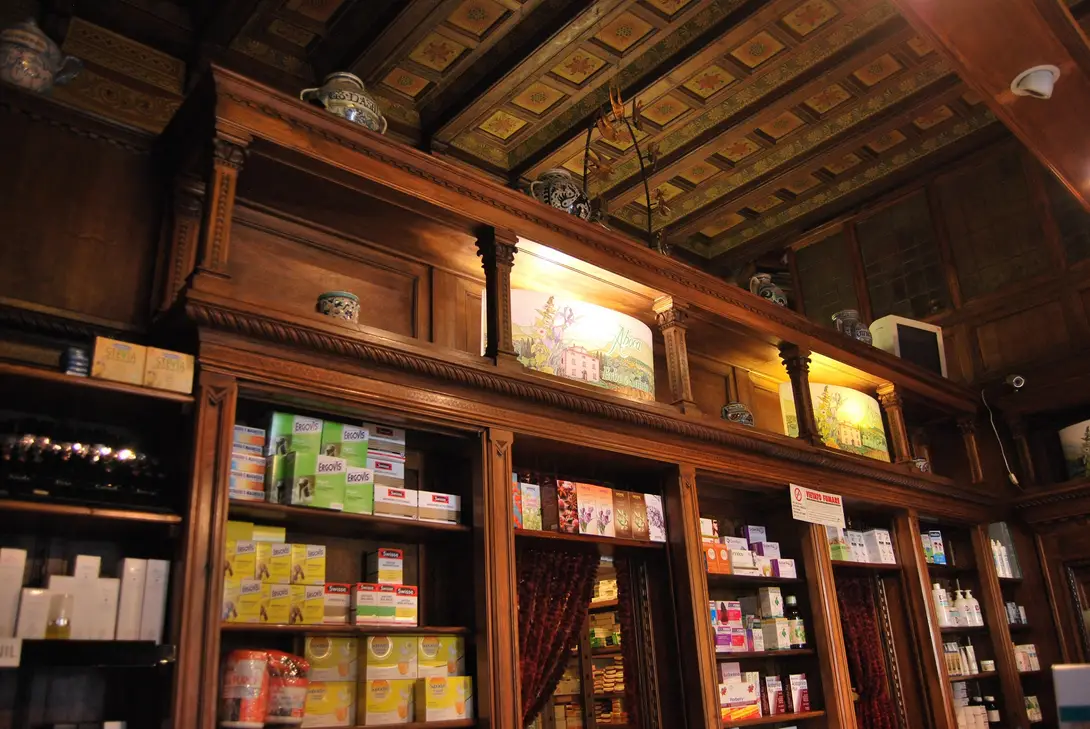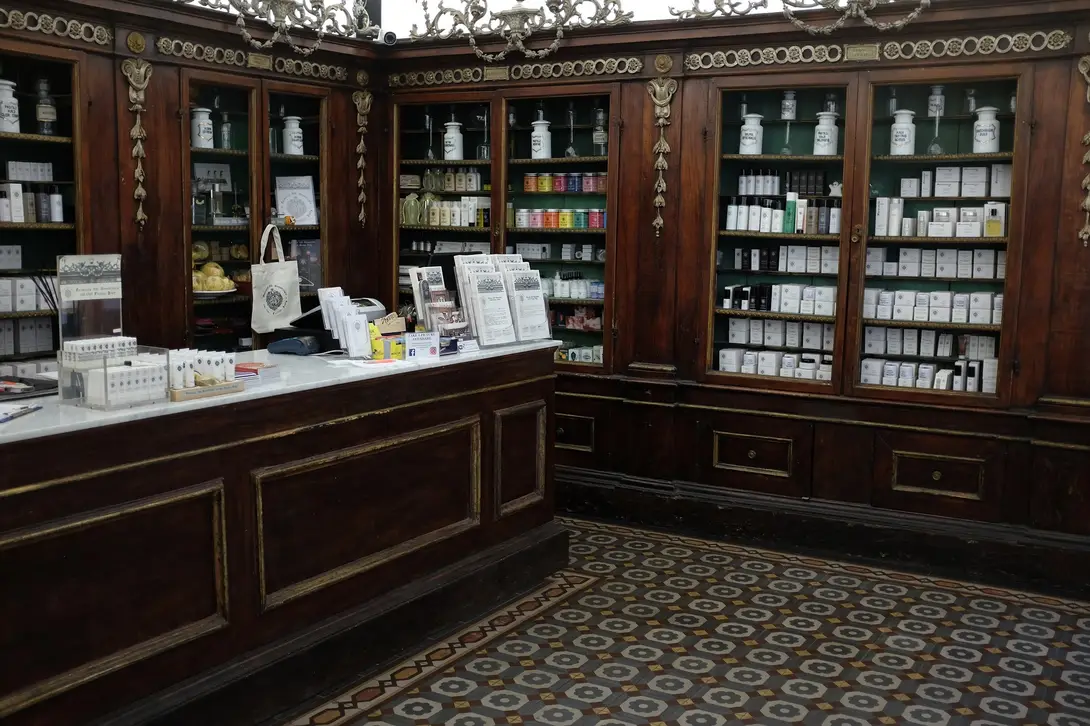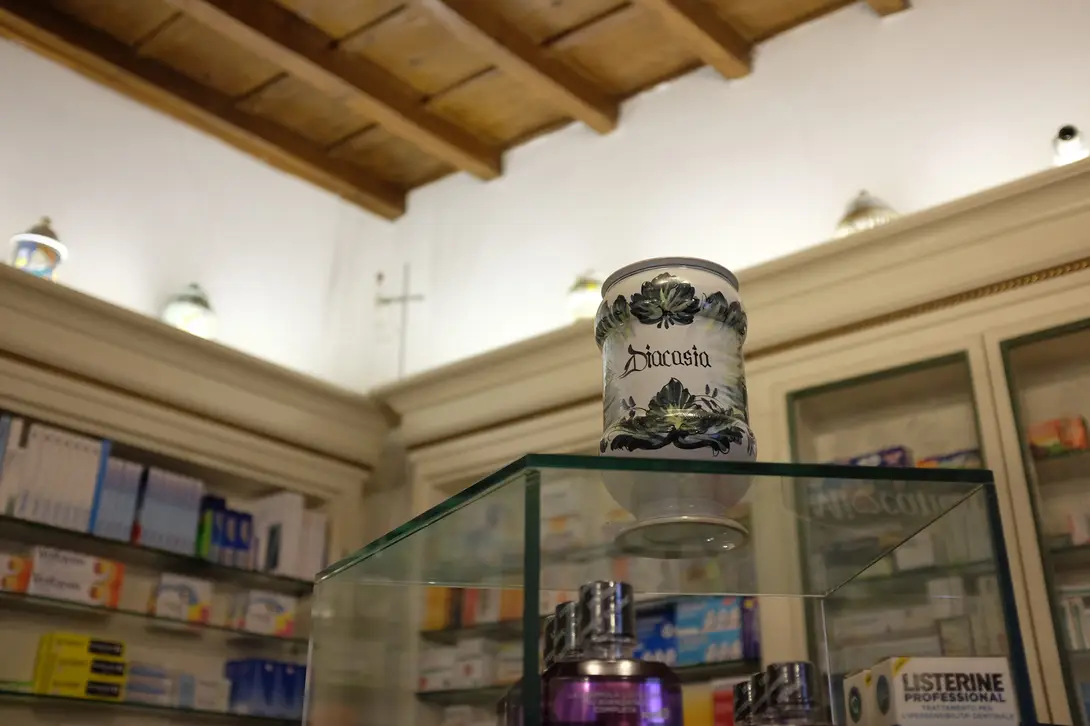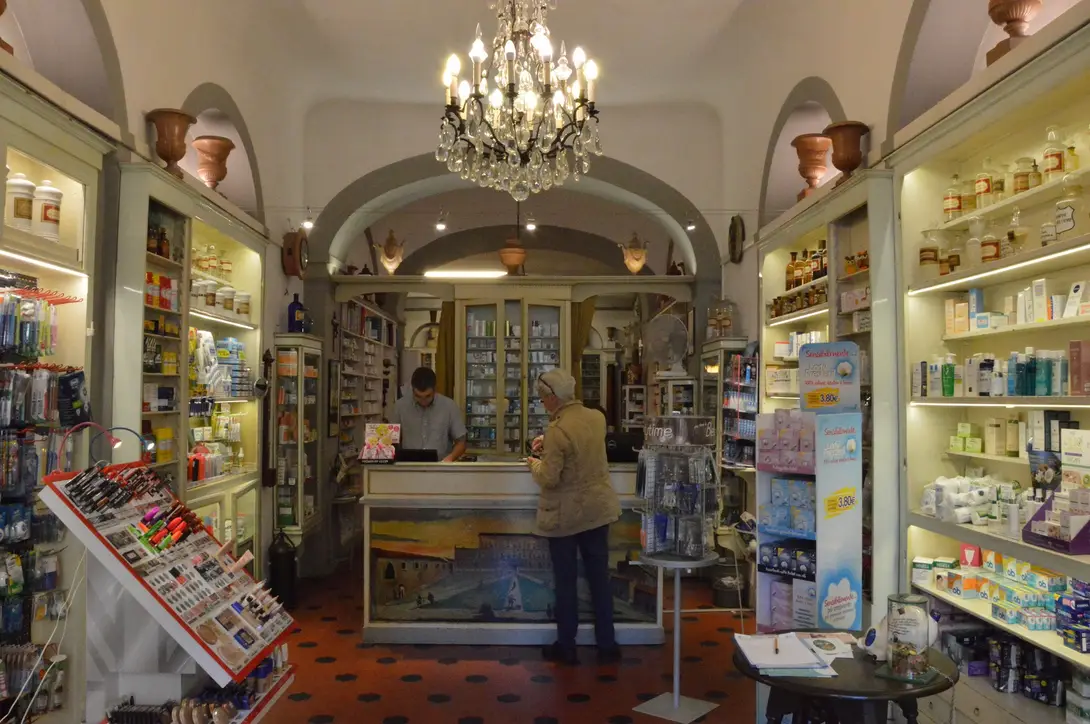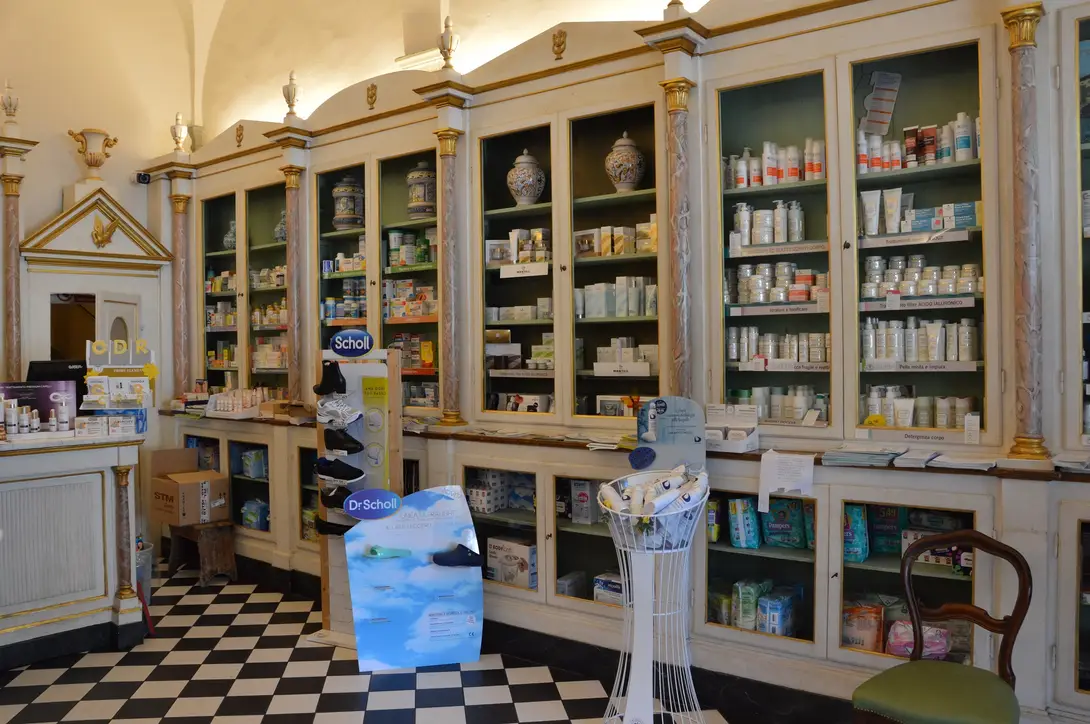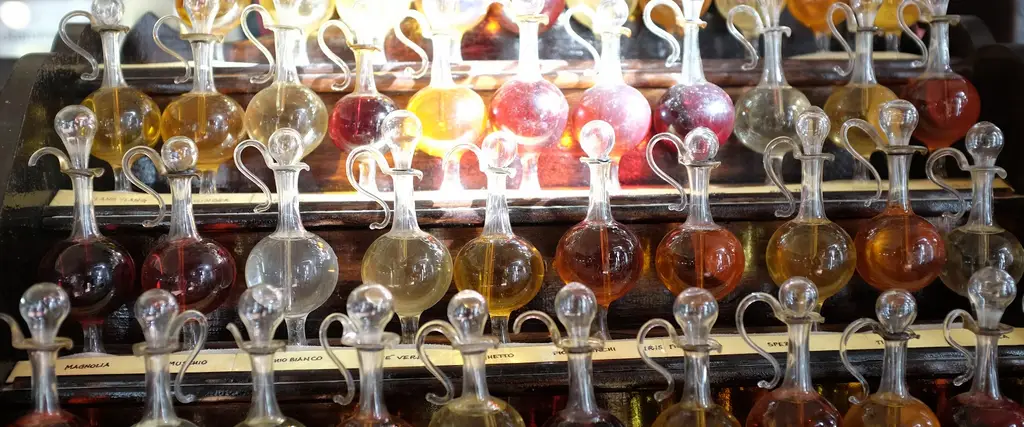
Historic pharmacies, a walk in the city!
The ancient pharmacies are among the historic shops, which the Municipality of Florence protects and supports. These unique places have undoubtedly kept their charm intact over the years, as they are still permeated with history and pharmaceutical tradition. On the timeworn shelves, modern treatments are placed next to ancient jars, once preserving herbs and remedies. Original furnishings complete this old-time atmosphere.
Each pharmacy has its own story to tell, anecdotes of famous people who passed by and sometimes, a very long family tradition: if you have the opportunity, ask the pharmacist! Here are some visiting tips about the historic pharmacies of Florence.
Comune di Firenze
The places
Stages
Officina Profumo Farmaceutica di Santa Maria Novella
The Officina Profumo-Farmaceutica di Santa Maria Novella is one of the oldest pharmacies in the world, its origins date back to the XIII century. Dominican monks who lived at the monastery of Santa Maria Novella Church ran a small infirmary to care for sick monks and Florence's poor. They cultivated herbs and medicinal plants to make syrups, pills and balms for their patients. One of the first remedies was the rose water, used to disinfect environments during the plague and as a bland medicament. It officially opened as a shop in 1612, due to the ever-increasing demand for the medicinal balms. The alchemist Fra Angiolo Marchissi, the first director of the shop in via della Scala, invented new preparations and ran the business very efficiently so that, shortly afterwards, it was named Foundry of His Royal Highness by the then Grand Duke of Tuscany.
Lots of perfumes and fragrances are still the same as they were produced for the Queen: the Eau de la Reine (Queen's Water) was invented by the monks upon the request of Florence's greatest ambassador, Catherine de’ Medici, who married King Henry II of France in 1533. She introduced this perfume (and many others) to the French court. Its fame soon spread throughout France. The shop was also renowned for herbal medicine: the monks used to grow plants and herbs with natural methods, without pesticides, and it is still the same today in the manufacturing plant in via R. Giuliani.
Visitors who make their way through the stone passageway leading inside the building find themselves in stunning frescoed rooms with marble floors, decorated with furniture dating back to XVIII century and with precious jars. Among them, the sales room was originally a chapel, now deconsecrated, dedicated to St. Nicholas, and its sacristy is decorated with frescoes depicting the Christ’s Passion.
Antica Münstermann Pharmacy
The German pharmacist Müstermann, who introduced for the first time homeopathy to Florence, founded this pharmacy in 1897. It was a successful business, this is why, in 1908, the pharmacy moved to the premises in Piazza Goldoni, where it took the name of Anglo-American Pharmacy up to 1935.
The original 19th-century furnishings have been preserved, although the restoration works due to the construction of the new tramway line. Other damages were caused by the flood in 1966. Nevertheless, the pharmacy retains its distinctive style, and still offer customers pharmaceuticals and cosmetics based on natural and herbal recipes.
Farmacia della Stazione
Since February 1953, the Farmacia della Stazioneis located in Via Panzani; entrance is through two shop windows framed by round arches. Its original furnishings, dating back to the '50s, feature a series of red wooden wall showcases, which was an original and modern choice for that time. This pharmacy is one of the few in town to offer galenic preparations, made in its historic annexed laboratory.
Farmacia Franchi
The pharmacy is located on the corner between Via dei Ginori and Via Guelfa, formerly known as "Canto alle Macine", in the same area where Boccaccio set his tale about naive Calandrino. An inscription in golden letters against a black background above the door leading to the back room, recalls the pharmacy's old name and the year of its foundation: "Antica farmacia al Canto alle Macine founded in 1427".
The furnishings, presumably dating early 20th century, consist of a set of wooden shelves and cabinets with double glass doors on the walls, and a counter whose front side is decorated with pilasters.
In addition to traditional health remedies, the main products on sale are homeopathic, herbal and cosmetic preparations.
Farmacia Molteni
The Molteni pharmacy, whose existence was well documented since the late 13th century, is still situated in its historic building, between Via Calzaioli and Via Porta Rossa, at the corner formerly known as "Canto al Diamante" (deriving its name from the pharmacy diamond-shaped shop-sign).
It is even said that Dante - a member of the Physicians and Pharmacists Guild (Arte dei Medici e degli Speziali) - had frequented this pharmacy and that it served many powerful families over the centuries. The pharmacy took its present name in 1892. Pharmacist Alfredo Alitti created an in-house laboratory where, for the first time in Italy, he started the production of sterile phialsfor hypodermic use and "Steridrolo Molteni", a device used by the Italian army during the African campaign.
Situated on the ground floor of the medieval “Palazzo di Calimala”, the pharmacy has retained only its bearing structure, while the present decoration scheme with cross vaults and golden stuccoes against a cream-colored background dates from the 19th century, as well as the wooden furnishings with inlay work and gold decorations created by the Florentine sculptor Giovanni Duprè.
Farmacia del cinghiale
This pharmacy - whose foundation dates back to 1752 - owes its name to the wild boar statue “Fontana del Porcellino”, which once stood at the entrance of the shop, and now is located on one side of the loggia of the Straw Market “Mercato della paglia”.
The origin of Farmacia del Cinghiale is documented in an important text, published in Florence in 1752, in which the Florentine physician Niccolò Branchi della Torre listed a series of chemical experiments conducted in the laboratory of this "Spezieria". This document not only testifies to the importance of this pharmacy as an avant-garde research center, but also the status of doctor Branchi, who, in 1757, was entrusted by the Grand Duke of Tuscany with the responsibility of the first Chemistry School in Pisa.
In the 19th century, the pharmacy became a meeting place for illustrious intellectuals, thus contributing to the cultural and political life of the city. Here the pharmacists still prepares natural remedies for health care and body care, using modern technologies and recipes of the past.
Farmacia Canto alle Rondini
Founded in the 14th century, it is one of the oldest pharmacies in the world and, as you can read on the plaque inside the shop, “the apothecary Matteo Palmieri - historian, moralist and poet, an example of simple but industrious life - worked here”.
Originally, the shop was located at the corner between Via Verdi and Via Pietrapiana, named Canto alle Rondini (Swallows Corner) in reference to the coat-of-arms of the Uccellini Family, owners of the palace, featuring three silver swallows on a red background. At the beginning of the 20th century, Adolfo Coppedè designed its neo-gothic furnishings and commissioned Umberto Bartoli to create a tabernacle with the statue of the Virgin crowned by a garland of swallows.
In 1938, following the building renovation in the Santa Croce district, decreed by the Fascist authorities, the palace with its pharmacy were demolished. The area remained empty for a long time, until 1962, when the Palazzo delle Poste (Post Office), designed by Giovanni Michelucci, was built on that site. The pharmacy and its tabernacle had been moved to the present location in via Pietrapiana: furnishings and decorations were adapted to the new premises, in order to remain faithful to the original plan by Coppedé.
The shop features a coffered ceiling, while the back wall is adorned by mural decorations. Shelves, glass cabinets, doors and cupboards in carved walnut, with oil-painted panels, decorate the walls. The sales counter is inspired by Florentine chests, a piece of furniture typical of the first half of the 15th century. The flood of 1966 caused considerable damages: the Madonna sculpted by Bartoli was lost. All that remains is the garland with gilt swallows, now displayed in the cabinet behind the counter.
The pharmacy also houses a terracotta bust representing Dante, titled "the divine pharmacist".
Farmacia SS. Annunziata
In 1561, the apothecary Domenico di Vincenzo Brunetti, a member of the Physicians and Pharmacists Guild, moved his shop to these premises, which had previously housed another “spezieria”, managed by the Benedictine Sisters of San Niccolò.
The SS. Annunziata pharmacy was specialized in galenic formulations and remedies for skin care and beauty.
The 17th-century furnishings of the sales area consist of three display cases made of dark wood with gold decorations. The counter has been severely damaged during the flood of 1966.
The pharmaceutical equipment, mainly dating from the 19th century, includes twelve jars from the Ginori manufactory. Although ancient tradition is still preserved, today the pharmacy owners work with modern technologies and new ingredients for preparations.
Farmacia de' Serragli
Founded around 1880, the pharmacy occupies the ground floor of a building on the corner between Via della Chiesa and Via de’ Serragli.
The original furnishings have been preserved in accordance with the taste of the owner of the time, Dr. Dylan. They consist of wooden cabinets originally in blue and later repainted in white. In 1998, the shop was renovated and the furnishings restored, therefore the pharmacy still preserves its own unique style.
Farmacia Pitti
The Farmacia Pitti opened in 1810, but documents from the land registry testify to the existence of a "spezieria" (pharmacy) in Piazza San Felice as early as 1427. The owners were first Mr. Cenni di Nicolò and his wife, then, later, in 1498, the same pharmacy seems to belong to Bartolo di Giovanni.
From the 18th centrury, the history of this pharmacy overlaps the one of the Spezieria Granducale (grand-ducal pharmacy), which, in those years, moved from Palazzo Pitti to Piazza San Felice. Documents dating from the first half of the 19th century show that the owner of the pharmacy was Gaspero Puliti di Giovacchino, a well-known apothecary at the service of the Grand Duke up to 1806, who was chosen to manage the new pharmacy, after closing the one in Palazzo Pitti.
The furnishings in the back of the shop probably came from the grand-ducal pharmacy, as we can guess from the decorations (niches and vases) and from the symbolic elements alluding to medicinal properties (with the busts of Hippocrates and Galeno). The focal point is the bean-shaped counter with drawers and top in Carrara marble. The pharmacy’s shelves are full of glass and ceramic objects, some of which belonging to Dr. Targioni, who took over the management of the shop during the past century and opened other premises in Vallombrosa.
Today the Farmacia Pitti is managed by Dr. Pacenti, and it still presents an entrance door in pietra serena, decorated with the signs and symbols of the Arte dei Medici e degli Speziali (Physicians and Pharmacists Guild).
Farmacia Santo Spirito
Founded in 1908 by Gilda Bacci, the pharmacy is located on the ground floor of the fifteenth-century Palazzo Dati. The property changed hands a few times during the 20th century (Dante Castellani, then Zangirolami family), but ancient records document its origin in the early 16th century, when the property belonged to one of the most famous apothecary in Florence: Anton Francesco Grazzini.
The Farmacia Santo Spirito still boasts its original furnishings: white glass-fronted shelves, separated by wooden columns topped by porcelain vases.
Recently, thanks to the current owners, the premises of the pharmacy have been completely restored to its former glory.
